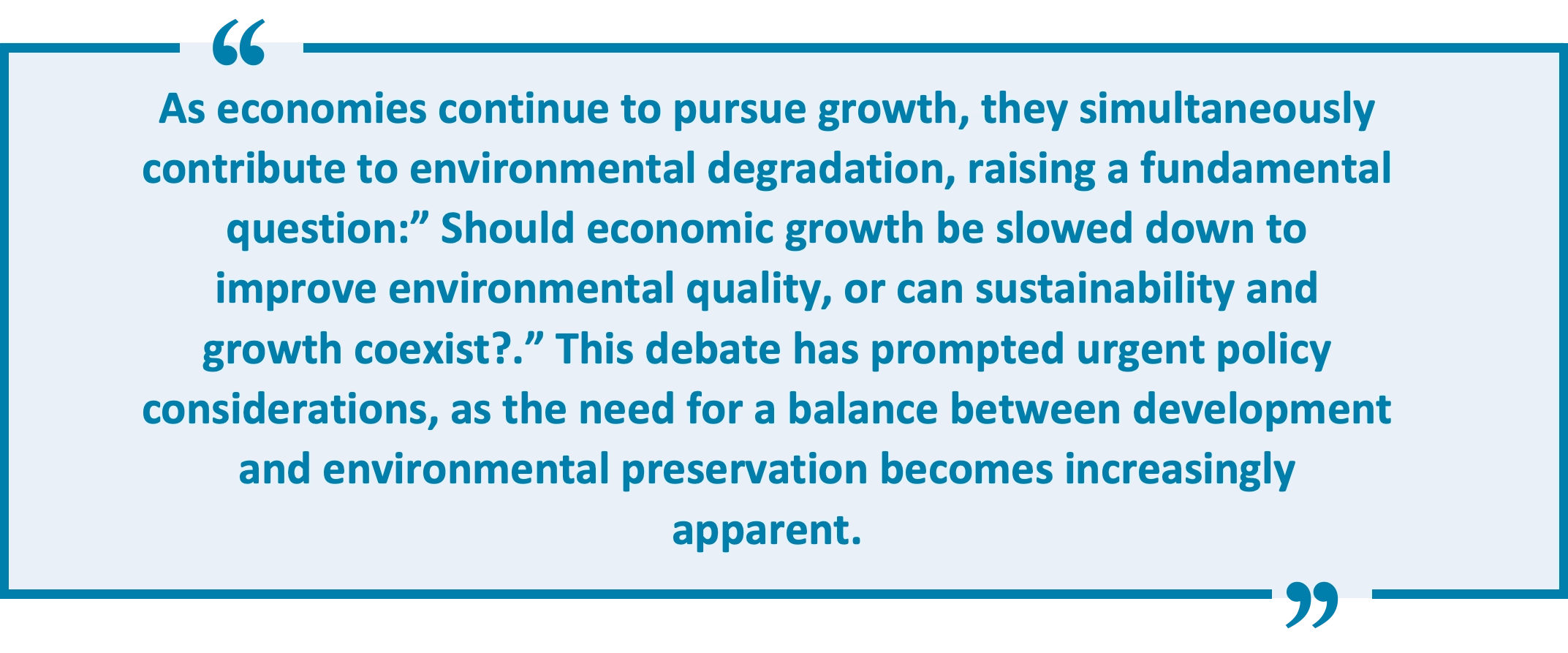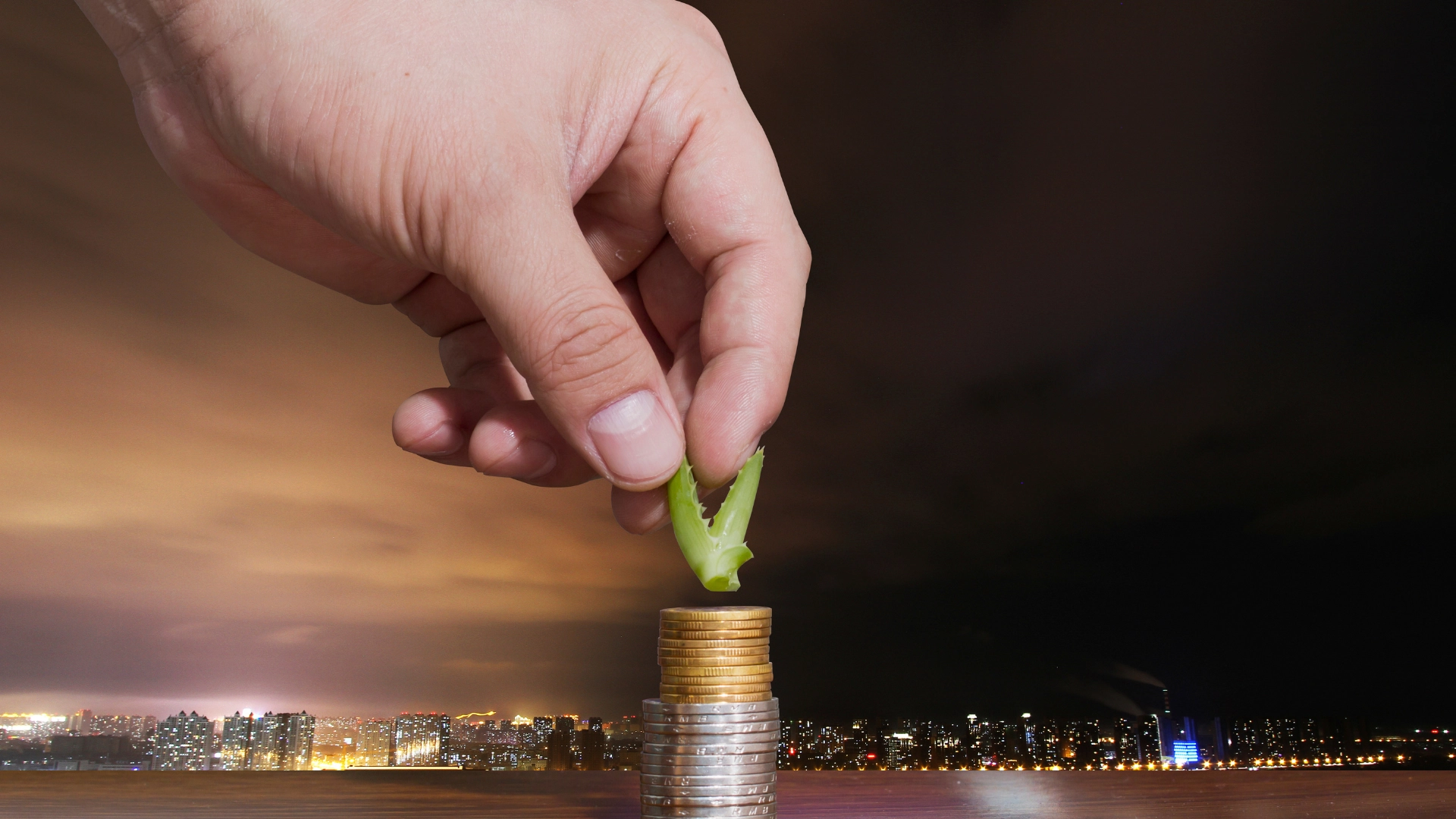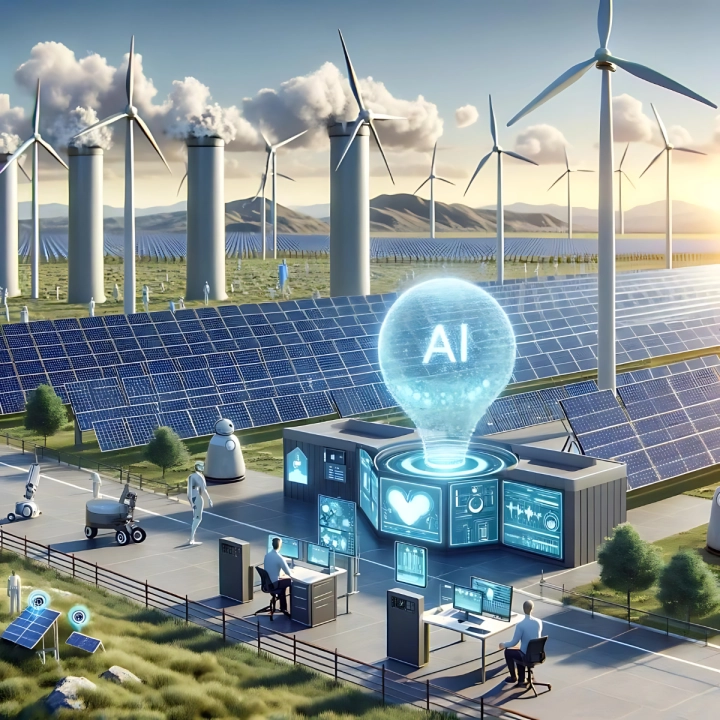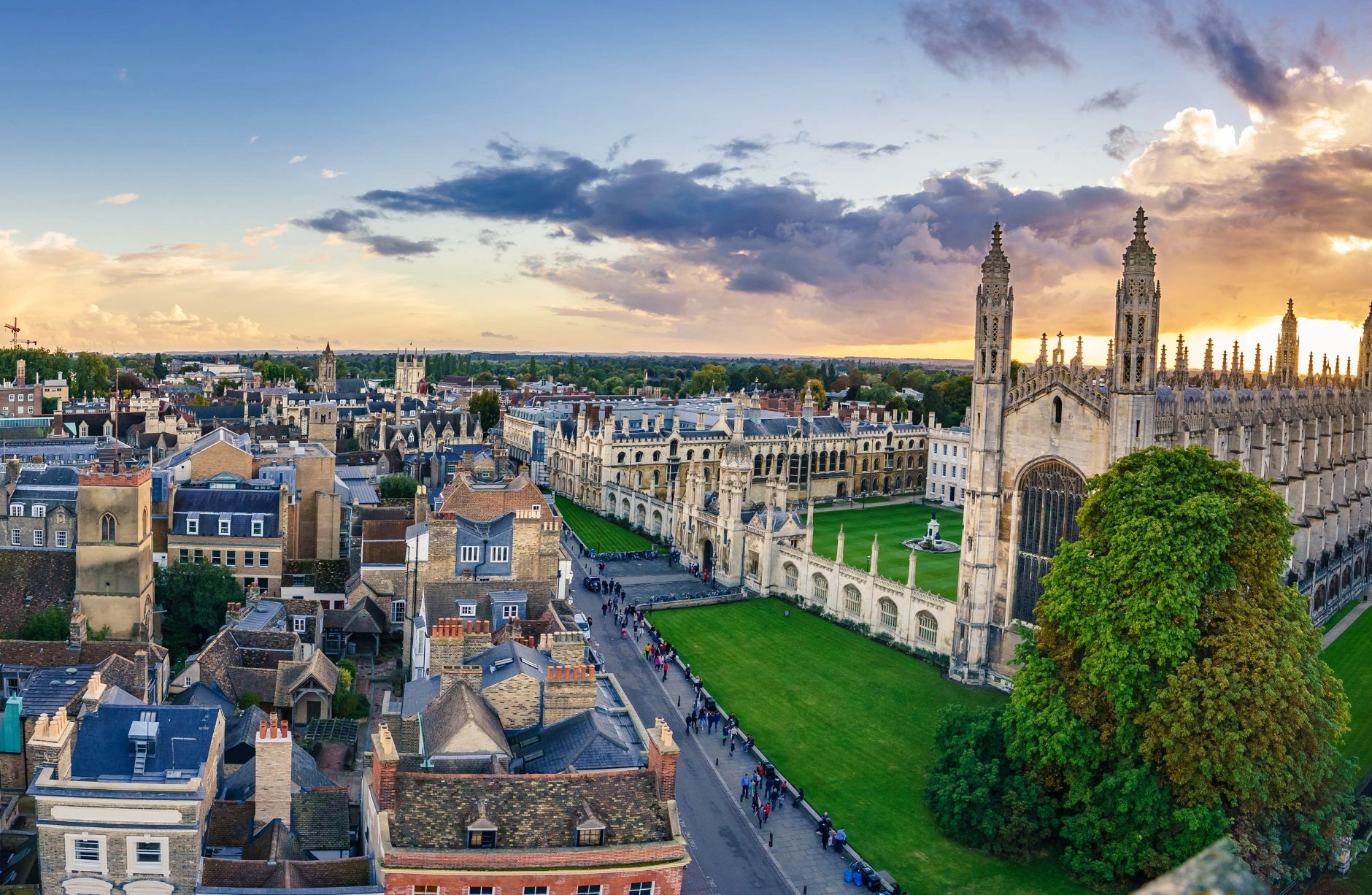
The Green Economy: Can Sustainable Investments Drive Growth?
Climate change is no longer a distant threat—it is an urgent economic and social challenge. Rising global temperatures, extreme weather events, and environmental degradation have forced policymakers, businesses, and investors to rethink traditional economic models. A key question has emerged: “Can we sustain economic growth while reducing our environmental footprint?”
The transition to a green economy—one that prioritizes sustainability, low-carbon development, and resource efficiency—has become imperative. Conventional growth models, which have historically relied on fossil fuels and high-emission industries, are proving unsustainable both ecologically and financially. Governments and businesses worldwide are now investing in renewable energy, green infrastructure, and sustainable technologies to drive long-term economic prosperity while mitigating climate risks.
However, this transition presents complex challenges. “Can sustainable investments truly replace traditional growth engines? Will green policies stimulate job creation, innovation, and productivity, or will they impose economic trade-offs?” As countries navigate this shift, the debate overgrowth versus sustainability remains at the forefront of economic discussions.
To assess the economic and environmental trade-offs of green growth strategies, researchers and policymakers rely on data-driven modelling and econometric analysis. Tools like Stata software, provided by Timberlake Consultants, offer robust capabilities for analyzing renewable energy investments, carbon pricing mechanisms, and sustainability policies.
In this blog post, we will explore the potential of sustainable investments to drive economic growth, examining empirical evidence, policy debates, and real-world case studies to better understand whether a green economy can be both a necessity and an opportunity for global prosperity.


- The Green Economy
- Green-Growth vs. No-Growth Strategies
- The Green-Growth Perspective
- The No-Growth (Degrowth) Perspective
- The Growth-Sustainability Dilemma: Conflicting Empirical Evidence
- The Role of Finance in Green Growth
- Trade and Green Growth: A Global Perspective
- Conclusions: Navigating the Path to a Sustainable Future
The Green Economy
The United Nations Environment Programme (UNEP) defines a green economy as “one that results in improved human well-being and social equity, while significantly reducing environmental risks and ecological scarcities” (UNEP, Green Economy Reports, 2010). In the wake of the 2008 financial crisis, the green economy emerged as a central theme in global economic discussions, increasingly viewed by governments and international organizations as a transformative approach to achieving sustainable development (UNEP, 2011; The World Bank, 2012). This shift reflects a growing recognition that economic growth must be decoupled from environmental degradation to ensure long-term prosperity.
At its core, the green economy is built on a low-carbon, resource-efficient model that emphasizes energy conservation, pollution reduction, and emissions control (X. Jin, 2012). Unlike traditional economic frameworks that have often prioritized short-term growth at the expense of natural resources, the green economy aims to align economic expansion with environmental responsibility. By fostering investments in clean energy, sustainable infrastructure, and circular economies, this approach not only mitigates ecological risks but also creates opportunities for innovation, job creation, and social equity. As global challenges such as climate change and resource scarcity intensify, the transition toward a green economy is becoming a necessity rather than an option.
According to the literature, the green economy has been widely recognized as a key approach to addressing climate change crises and mitigation efforts (E. Loiseau et al., 2016; UNEP, 2011a). Over the past decade, the European Union (EU), South Korea and China have emerged as frontrunners in implementing green economy policies, integrating sustainability into their economic frameworks. The EU has embedded green economy principles into major policy initiatives such as the Europe 2020 strategy and the Resource Efficiency Roadmap (Mazza & ten Brink, 2012), emphasizing the transition toward a more sustainable and resource-efficient economy.


In the existing literature, two distinct approaches have been proposed to tackle this challenge: the green-growth strategy, which seeks to integrate sustainability within economic expansion, and the no-growth strategy, which advocates for limiting growth to reduce ecological harm. Understanding the trade-offs and implications of these strategies is crucial for shaping effective environmental and economic policies.
Green-Growth vs. No-Growth Strategies
The debate over how best to address environmental challenges has led to two competing economic strategies: green growth and no-growth (or degrowth). While both approaches recognize the urgency of climate action, they differ fundamentally in their vision for economic development and sustainability.
The Green-Growth Perspective
Proponents of green growth argue that economic expansion can be compatible with environmental sustainability if the right policies and technologies are implemented. This approach seeks to decouple economic growth from environmental degradation by shifting towards renewable energy sources such as wind, solar, geothermal, biomass, and hydrogen. Policy instruments such as carbon pricing, pollution taxes, green subsidies, and tax incentives for clean technologies are considered essential tools to drive investment in sustainable industries (Hao et al., 2021; Xu et al., 2021). By promoting technological innovation and resource efficiency, green growth aims to lessen climate change while maintaining economic prosperity.
The No-Growth (Degrowth) Perspective
In contrast, no-growth (or degrowth) advocates argue that economic expansion—no matter how green—leads to environmental degradation and resource depletion. They contend that the only way to effectively combat climate change and ecological collapse is to significantly slow down or halt economic growth altogether. The logic behind this argument is that even with sustainability measures in place, continued economic activity drives energy consumption, carbon emissions, and ecological destruction. Therefore, proponents of no-growth believe that radical policy measures—such as strict resource consumption limits, reduced production, and consumption, and shifts toward local self-sufficiency—are necessary to prevent irreversible environmental damage (Balcilar, Usman, & Ike, 2023).


However, critics of the no-growth model argue that such an approach may be politically and socially unfeasible, especially in democratic societies where economic well-being is intricately linked to employment, living standards, and political stability. Historically, extreme forms of economic restriction have only been enforced in authoritarian regimes, where governments have exerted control over foreign and domestic assets, restricted investments, and imposed severe limitations on private property rights (Victor, 2008). This raises ethical and practical concerns about how a no-growth strategy could be implemented without significant disruptions to economies and societies.
The Growth-Sustainability Dilemma: Conflicting Empirical Evidence
The question of whether economic growth should be moderated to safeguard the environment has sparked extensive debate, leading to a growing body of empirical research. Scholars have attempted to assess this issue through growth models and environmental economics frameworks, yet the findings remain inconclusive and highly context dependent.
One school of thought argues that renewable energy can serve as a driver of economic growth, as investments in clean energy technologies stimulate job creation, enhance energy security, and foster technological innovation (Hao et al., 2021; Ozcanet al., 2019; Wadström et al., 2019). According to this perspective, economies that transition toward renewables benefit from long-term efficiency gains, reduced dependency on fossil fuels, and lower environmental costs, strengthening their growth potential.
However, a contrasting body of research presents a more skeptical view, arguing that the shift to renewable energy may, in fact, impede economic growth, particularly in developing economies. High upfront investment costs, technological limitations, and inadequate infrastructure often restrict the widespread adoption of renewables, making them less accessible and cost-effective compared to conventional fossil fuels. As a result, some studies suggest that dependence on renewable energy may slow down economic expansion, particularly in countries that lack the financial and technological capacity to sustain a full-scale transition (Bhattacharya et al., 2016; Dogan et al., 2020; Ocal & Aslan, 2013).
The Role of Finance in Green Growth
Beyond energy production, another crucial yet often overlooked catalyst for green growth is the financial sector, a concept deeply rooted in the pioneering work of Joseph Schumpeter (1911). Schumpeter’s theory on finance and economic growth highlights the role of a well-developed financial system in channeling resources toward productive and innovative sectors, stimulating economic expansion.
In the context of the green economy, financial markets are instrumental in redirecting capital flows away from traditional high-emission industries and toward sustainable and environmentally friendly sectors. By facilitating investments in renewable energy, clean technologies, and green infrastructure, financial institutions can accelerate the shift toward a low-carbon economy.
Recent empirical research supports this view. According to De Haas et al. (2022), stock markets facilitate green innovation in carbon-intensive industries, leading to lower carbon emissions per unit of output. Moreover, preliminary evidence suggests that financial markets also help reallocate investment toward more energy-efficient sectors, reinforcing the link between finance and sustainability.
To accelerate this shift, financial instruments such as green bonds, impact investing, carbon credit markets, and sustainability-linked loans have gained traction. These mechanisms incentivize environmentally responsible investments, encourage companies to adopt sustainable practices, and ensure that capital flows align with long-term climate and sustainability goals. As governments and businesses commit to net-zero targets, leveraging financial markets effectively will be crucial in scaling up green investments and ensuring that sustainability remains a viable driver of economic growth.
Trade and Green Growth: A Global Perspective
Another key dimension of the green growth debate is the role of global trade and economic integration. Trade liberalization has long been recognized as a fundamental driver of economic expansion, fostering technological diffusion, increasing competition, and providing access to sustainable technologies across borders. In theory, increased trade can enhance green growth by facilitating the global transfer of clean energy innovations and environmentally friendly production methods. However, without stringent environmental regulations, trade can also exacerbate pollution and resource depletion, particularly if production shifts to countries with weaker environmental policies (the so-called pollution haven hypothesis). Recent studies have expanded FDI’s impact on environmental degradation, especially in emerging economies, which has been identified as the Pollution Haven Hypothesis to evaluate how investments from developed economies can harm the environmental quality in emerging economies. Bashir, M. F. (2022). proposed that strict environmental regulations will act as efficient policy measures to waste exports to developing economies.
Conclusions: Navigating the Path to a Sustainable Future
The transition to a green economy presents both opportunities and challenges, with competing strategies—green growth and no-growth—offering different visions for balancing economic development and environmental sustainability. While some advocate for policies that drive innovation, renewable energy investment, and sustainable finance, others argue that limiting growth is the only viable solution to preventing irreversible ecological damage.
Empirical research on the growth-sustainability dilemma remains inconclusive, with studies showing both positive and negative economic impacts of the green transition, depending on factors such as investment costs, technological advancement, and policy implementation. Meanwhile, finance and trade play a critical role in accelerating the shift toward sustainability, ensuring that capital is directed toward clean energy, sustainable infrastructure, and environmentally friendly industries. However, the effectiveness of these mechanisms depends on robust policy frameworks, strategic investment, and global cooperation.
As policymakers, businesses, and researchers seek data-driven solutions to assess the economic and environmental trade-offs of green growth, advanced econometric modelling tools become essential. Stata software, provided by Timberlake Consultants, offers powerful capabilities for analyzing economic and environmental data, estimating causal relationships, and simulating policy impacts. Whether assessing renewable energy investments, carbon pricing mechanisms, or financial market dynamics, Stata provides a comprehensive toolkit for researchers and policymakers striving to build a sustainable and resilient global economy.


Francisca Carvalho, Lancaster University
Francisca is a third-year PhD student in Economics at Lancaster University. Her research focuses on climate risk factors and their impact on portfolio returns. She also teaches mathematics, econometrics, macroeconomics and microeconomics, to undergraduate and postgraduate students.
- Balcilar, M., Usman, O., & Ike, G. N. (2023). Investing green for sustainable development without ditching economic growth. Sustainable Development, 31(2), 728-743.
- Bashir, M. F. (2022). Discovering the evolution of the Pollution Haven Hypothesis: A literature review and future research agenda. Environmental Science and Pollution Research, 29(32), 48210-48232.
- Çelik, D., Meral, M. E., & Waseem, M. (2022). Investigation and analysis of effective approaches, opportunities, bottlenecks and future potential capabilities for digitalization of energy systems and sustainable development goals. Electric Power Systems Research, 211, 108251.
- De Haas, R., & Popov, A. (2023). Finance and green growth. The Economic Journal, 133(650), 637-668.
- Hao, L. N., Umar, M., Khan, Z., & Ali, W. (2021). Green growth and low carbon emission in G7 countries: How critical is the network of environmental taxes, renewable energy, and human capital? Science of the Total Environment, 752, 141853.
- Jin, X. G. (2012). Low-carbon development path based on SWOT analysis. Journal of Sustainable Development, 5(8), 78-83.
- Loiseau, E., Saikku, L., Antikainen, R., Droste, N., Hansjürgens, B., Pitkänen, K., & Thomsen, M. (2016). Green economy and related concepts: An overview. Journal of Cleaner Production, 139, 361-371.
- Mazza, L., & ten Brink, P. (2012). Green economy in the European Union: Supporting briefing. United Nations Environment Programme (UNEP) & Institute for European Environmental Policy (IEEP).
- United Nations Environment Programme (UNEP). (2010). Green economy reports: A preview (pp. 4-5). UNEP, Nairobi, Kenya.
- United Nations Environment Programme (UNEP). (2011). Towards a green economy: Pathways to sustainable development and poverty eradication.
- World Bank. (2012). Inclusive green growth: The pathway to sustainable development (p. 171). The World Bank, Washington, D.C.
- Xu, Y., Liu, W., Pu, R., & Xu, Y. (2021). Be green to be innovative: The role of government subsidies. Frontiers in Environmental Science, 9, 765100.













